Famished, St. Patrick hits the road again following Lent
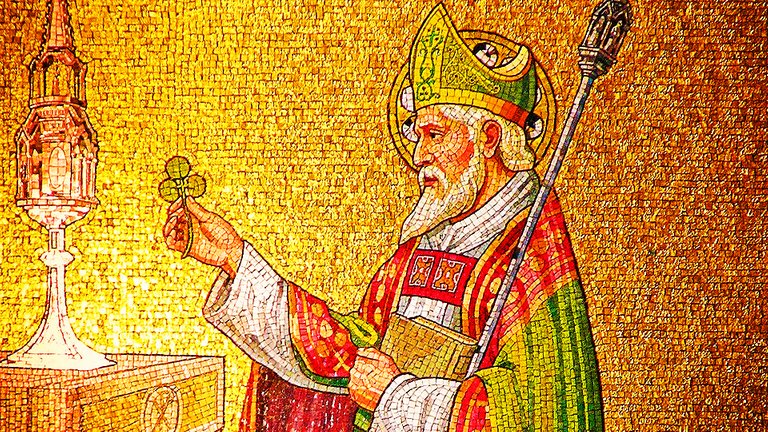
“It’s a long story – to tell each and every deed of mine, or even parts of it. I’ll make it short, as I tell of how the good God often freed me from slavery, and from twelve dangers which threatened my life, as well as from hidden dangers and from things which I have no words to express. I wouldn’t want to hurt my readers! God knows all things even before they are done, and I have him as my authority that he often gave me warnings in heavenly answers, – me, a wretched orphan!” – Saint Patrick, Confessio

Bless his heart, old Saint Patrick probably wouldn’t get caught celebrating at a parade during Lent, although he was a sinner, confessed, nonetheless. Rather the Venerable Bishop preferred sitting atop a nearby mountain or crough, steadfastly praying and fasting forty days, banishing demons & snakes. Every day was St. Paddy’s, in the life of the original St. Pat.

The bacchanalian parades didn’t begin until 1601, in St. Augustine, Florida, nearly a thousand years (and 4,000 miles) later. Stoicism and simplicity were Saint Patrick’s rules of thumb, as he slowly converted and baptized one pagan Druidic royal household after another, throughout the Gaelic Island.
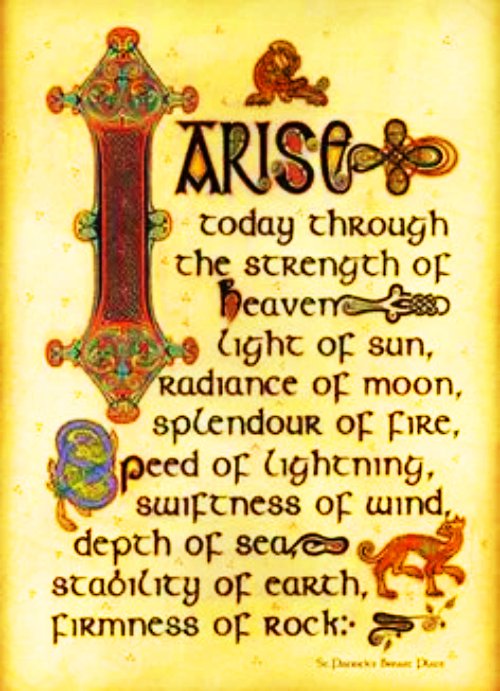
There are endless interpretations of St. Patrick's life, each one delivers a slightly different story, none are quite exactly the same. Only two things remain certain, regarding our legendary Patron Saint of Ireland: no snakes crawl upon the emerald isle, but there’s plenty of Christians!
Goodly Saint Patrick, as it is told, came to Ireland from across the sea, a captive of pirates who took him, at age sixteen, to work as a shepherd boy. Six years later, through devout & steadfast prayer, voices lured young Patrick to escape his bondage & abscond back to Britain by hitching a boat ride.

Young Maewyn Succat, as Patrick was known in his hometown, legend says, was the son of Conchessa and Calpurnius, a local senator, tax collector & deacon of the Roman Empire, administered through the western half of the tetrarchic system established in the Year of our Lord, 284. During the century prior to St. Patrick's birth, Constantine the Great ruled both halves of the empire as a pagan, then converted to Christianity in 312. By comparison, the First Council of Nicaea happened in 325; the emperor died in 336; and the Nicene Creed became the official Roman religion in 380, thereabouts.
Keep in mind that St. Patrick’s life is loosely described as 5th Century, late antiquity Sub-Roman Britain; on the outskirts of the Western Roman empire. Ireland, beyond those shores, was the “Wild West” of the time, inhabited by polytheistic Druidic Celtic kingdoms. Christianity was making its way across Europe, while the empire itself was crumbling apart. Along his journeys, Patrick, like Moses before him, brought a new religion to overcome a foregin land, eventually building Ireland into a great cathedral.
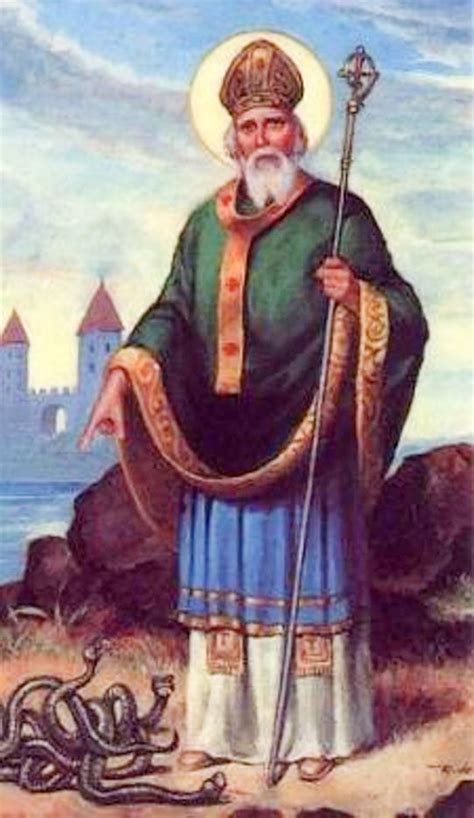
Although nobody has been able to pinpoint exactly when & where St. Patrick was born, or when he died for that matter, he was surely acquainted with Christianity during childhood and fluent in Latin. The English language did not exist yet.
After being kidnapped to Ireland, Patrick learned to speak the local dialect, a primitive Proto-Goidelic language today named Archaic Irish (Gaeilge Ársa), whose written form is called Ogham.

Thus St. Patrick initially arrived in Ireland a non-believer, but returned back home delivered as a devout Christian, then entered the seminary, receiving his tonsure as an ordained monk. A few years later, he returned to Ireland again, this time permanently.
Patrick’s decision was based on a vision he had, described in his partially autobiographical Confessio:
“A few years later I was again with my parents in Britain. They welcomed me as a son, and they pleaded with me that, after all the many tribulations I had undergone, I should never leave them again. It was while I was there that I saw, in a vision in the night, a man whose name was Victoricus coming, as it were, from Ireland with so many letters they could not be counted. He gave me one of these, and I read the beginning of the letter, the voice of the Irish people. While I was reading out the beginning of the letter, I thought I heard at that moment the voice of those who were beside the wood of Voclut, near the western sea . They called out as it were with one voice: ‘We beg you, holy boy, to come and walk again among us.’ This touched my heart deeply, and I could not read any further; I woke up then. Thanks be to God, after many years the Lord granted them what they were calling for.”
Patrick’s missionary work in Ireland wasn’t all fun & games. His strange religious views sometimes clashed with local pagan leaders, especially when Patrick converted their daughters and sons into becoming celibate. Yet his fluency in the local tongue made his job much easier. “How has this happened in Ireland? Never before did they know of God except to serve idols and unclean things. But now, they have become the people of the Lord, and are called children of God. The sons and daughters of the leaders of the Irish are seen to be monks and virgins of Christ,” Saint Patrick wrote.
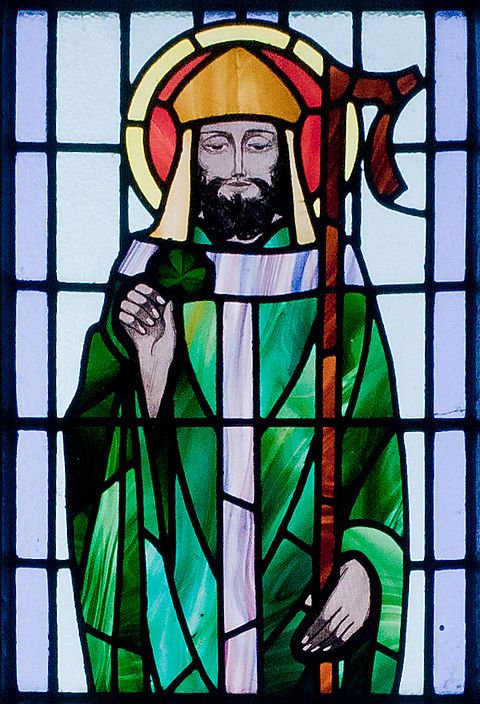
Here comes Patrick now, over the hill on his way into town with an entourage, can you see? He brings nothing to trade, no virgin captives for sacrifice, but only good news: You are a sinner, worshiping graven objects as false “gods,” but it is not too late, you can embrace the One True God, who sacrificed his only begotten son so that all can be redeemed. Patriccus, or “The Nobleman,” didn’t write ahead, rather announcing his arrival ringing a cowbell from atop his steed. There was no telephone, or internet, and the printing press wouldn’t be invented for another thousand years. An early confessor, Patrick earned his sainthood through words & deeds, rather than martyrdom or miracles, five centuries before the canonization process was formalized.
Regardless, we can still interpret three miracles for the Church, delivered through Providence, leading Patrick, together with an entire island of Pagan Celts, onto the path of Christ. The first was his unlikely capture & imprisonment by seafaring brigands; the second a daring & improbable escape; and lastly Patrick’s unpredictable return followed with outstanding success as an early Catholic Bishop. This is not meant to gloss aside the story of the snakes, or the allegory of the three-leafed clover; the hand of God thrice pointed Patrick directly for to become a beloved Saint, whose pilgrimage continues each year with an annual parade, held in many foregin cities worldwide on his Feast Day.
Captions:

St. Cyprian, Bishop of Carthage, martyred in 258 A.D., urged diligence in the process of canonization, but his ideas took nearly a thousand years to get formally adopted. St. Patrick, by comparison, became sainted through words & deeds, rather than martyrdom & miracles.
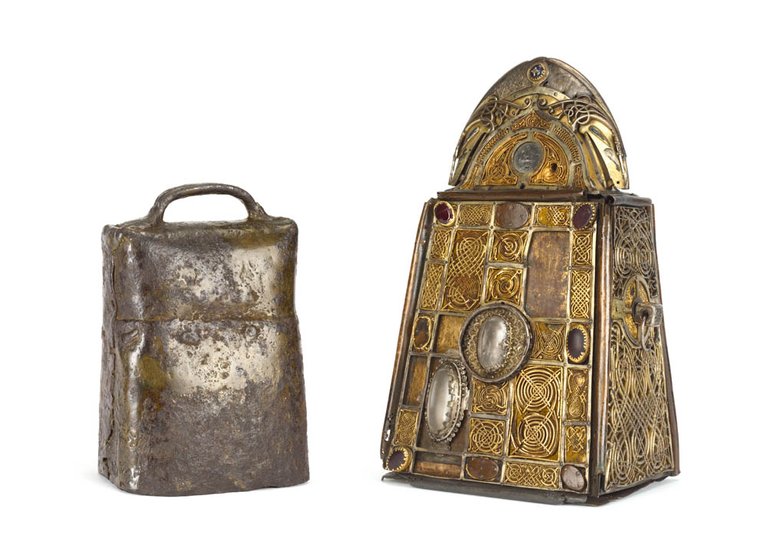
St. Patrick’s Bell was hidden in Armagh, Ulster Province, Northern Ireland, for nearly a thousand years, by the Mulholland family, before eventually making its way to the National Irish Museum in Dublin. The relic was removed from St. Patrick's purported grave, sixty years after his alleged 461 burial in nearby Downpatrick. Anglo-Norman invader John de Courcy uncovered St. Patrick’s bones again in 1183.
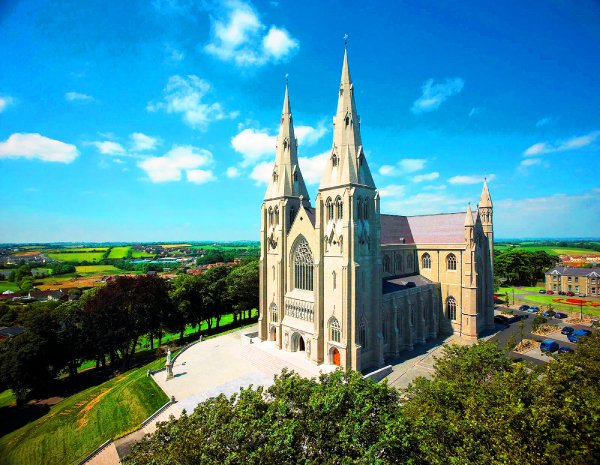
Patrick converted the pagan sanctuary of Armagh to Christianity, founding his main church there in 445. Brian Boru, the High King of Ireland, acknowledged it as such six hundred years later, and was buried in St. Patrick’s Cathedral there in 1014. The Vatican-sponsored 12th century Anglo-Norman invasion has kept Ireland divided for over 800 years, with Armagh, the nation’s true heart, still held today by descendants of the British occupiers.
